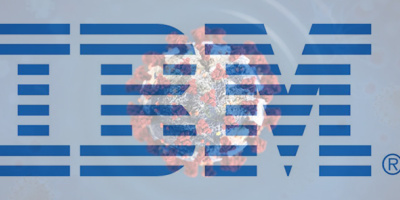"Report me and my cause are right to the unsatisfied." A troubled Hamlet said it originally, but today those sentiments and the attendant melancholy swirl like storm clouds around John Akers. As he struts his time upon the corporate stage, the beleaguered chairman of IBM finds himself pressed by an unresponsive economy and growing legions of unsatisfied stockholders.
There's been a lot of news from Armonk lately and it's all been bad. Six years of the gospel according to Akers-the dogma of downsizing, which saw one- fourth of all plants close and an equal percentage of employees depart-have done little to stem the hemorrhage of red ink. In fact, it's gotten worse. In the last two years, IBM has lost a jolting 7.58 billion dollars. In December the stock hit a 10-year low, trading at $49 and change, down more than 125 points in a five-year slide.
Earnings have failed to cover dividend payments for 1991 and 1992, and a grim Chairman Akers announced the likelihood of a "first ever" dividend cut and the first officially conceded layoff of 25,000 more employees. Additionally, he cited IBM's intent to cut its Research and Development budget (the largest in the nation) by 17 percent or $1 billion.
The immediate response was a massive sell-off of IBM stock by institutional investors. The New York Times reported that in one two-day stretch, IBM investors lost more than $6 billion. Pension fund managers dumped the stock before year-end to claim offsetting tax losses. Smith Barney, which had rated IBM a "speculative buy," a tag more appropriate to what The New York Times called "a flash-in-the-petri-dish biotech stock," downgraded its rating to hold. The decline of IBM was taking on Shakespearean proportions.
Although downsizing as a magic bullet for corporate ills has become a national trend embraced by such industry giants as GM and Sears, there is growing evidence that it is a circuitous route to solvency. The American Management Association (AMA) reports that fewer than half of the companies that made substantial work force reductions in the last six years were able to improve their operating profit. What began as "a competitive drive," observes Eric Greenberg, research director of the AMA, "[has] become a way of life for many corporations." Industry is not treating the ills; it is shrinking the patient.
Paradoxically, patient-shrinking is itself a costly process. IBM executives indicate that it costs the corporation more than $100,000 to eliminate each job. According to independent consultants, the effects may not be desirous. John Parkington, director of research at Wyatt (a consulting firm), suggests: "The way that most companies handle downsizing has little effectiveness and little lasting value." In many instances, the workers are gone but the work remains, which actually slows a company's ability to respond to changing markets.
That ability has been at the heart of IBM's problems. A few years ago, IBM was still investing billions in the development of mainframes which were being forsaken by customers in favor of midrange systems, high-octane workstations and network configurations. The company has also been slow to fully exploit its own technological innovations. RISC technology and SQL, for example, were successfully commercialized elsewhere, often with the help of former IBM employees.
It has been a difficult paradigm shift for a generation of IBM managers weaned on marketing Big Iron. But IBM announced it will now move investment to newer technologies such as client-server computing, and will emphasize fast-growing areas like consulting and services. Curiously, there was no mention of midrange systems, which have been a notable success. In fact the AS/400 has been so successful that IBM has continued to invest both dollars and headcount in Rochester despite cutbacks elsewhere. Because of its success, some stockholders have lobbied for independent statehood for the AS/400 which, as an autonomous company, would still rank among the top half-dozen computer companies in the world.
The reduction of IBM's Research and Development budget has national implications. Many products spawned in IBM labs have sustained and propagated whole industries. The probability of fewer such products can have adverse consequences for the national economy. It is in the government's interest, therefore, to provide some relief to companies like IBM which have borne much of the financial burden of research and development for an entire industry. A successful model exists. The semiconductor industry's remarkable turnaround is, in part, credited to Sematech, an industry-government research consortium created five years ago to revitalize the nation's chip makers. Such partnerships between the public and private sectors would also serve to offset similar advantages that Japanese companies currently enjoy.
Unavoidably, questions have been directed at Akers concerning the small but growing number of corporate chiefs who have resigned under pressure from stockholders. Akers acknowledged: "We have disappointed ourselves, and we have disappointed other people as the computer industry has changed. I certainly, personally feel a great responsibility. Make no mistake about it." But asked if that responsibility would place his job among the 25,000 threatened, the chairman insisted that "...the track IBM is on in transforming the company is the right one. I do not plan on stepping aside. The board supports me."
To the casual stockholder (especially one burdened with a sardonic sense of humor), that must rank with the disappearance of Judge Crater and the demise of Amelia Earhart, as one of this century's great mysteries. But, there you have it. The corporation intends to continue on its charted course. And perhaps in the end it will prove to be the right one. But given the gravity of IBM's decline, and the length of the bottoming-out process, investors need a confidence-restoring signal from the board of directors.
A year ago, after the impending breakup of IBM was announced, I wrote: "Where is IBM's Board of Directors in all of this?" That question was finally answered on January 26, 1993. In the face of escalating criticism, IBM announced that it will replace John Akers.
In the end, perhaps, it did not matter whether Mr. Akers' cause was right, but that the number of the unsatisfied had grown so large that-for the good of the corporation-the board could no longer be perceived as sitting on the deck of the Titanic, listening to the band.





















 More than ever, there is a demand for IT to deliver innovation. Your IBM i has been an essential part of your business operations for years. However, your organization may struggle to maintain the current system and implement new projects. The thousands of customers we've worked with and surveyed state that expectations regarding the digital footprint and vision of the company are not aligned with the current IT environment.
More than ever, there is a demand for IT to deliver innovation. Your IBM i has been an essential part of your business operations for years. However, your organization may struggle to maintain the current system and implement new projects. The thousands of customers we've worked with and surveyed state that expectations regarding the digital footprint and vision of the company are not aligned with the current IT environment. TRY the one package that solves all your document design and printing challenges on all your platforms. Produce bar code labels, electronic forms, ad hoc reports, and RFID tags – without programming! MarkMagic is the only document design and print solution that combines report writing, WYSIWYG label and forms design, and conditional printing in one integrated product. Make sure your data survives when catastrophe hits. Request your trial now! Request Now.
TRY the one package that solves all your document design and printing challenges on all your platforms. Produce bar code labels, electronic forms, ad hoc reports, and RFID tags – without programming! MarkMagic is the only document design and print solution that combines report writing, WYSIWYG label and forms design, and conditional printing in one integrated product. Make sure your data survives when catastrophe hits. Request your trial now! Request Now. Forms of ransomware has been around for over 30 years, and with more and more organizations suffering attacks each year, it continues to endure. What has made ransomware such a durable threat and what is the best way to combat it? In order to prevent ransomware, organizations must first understand how it works.
Forms of ransomware has been around for over 30 years, and with more and more organizations suffering attacks each year, it continues to endure. What has made ransomware such a durable threat and what is the best way to combat it? In order to prevent ransomware, organizations must first understand how it works. Disaster protection is vital to every business. Yet, it often consists of patched together procedures that are prone to error. From automatic backups to data encryption to media management, Robot automates the routine (yet often complex) tasks of iSeries backup and recovery, saving you time and money and making the process safer and more reliable. Automate your backups with the Robot Backup and Recovery Solution. Key features include:
Disaster protection is vital to every business. Yet, it often consists of patched together procedures that are prone to error. From automatic backups to data encryption to media management, Robot automates the routine (yet often complex) tasks of iSeries backup and recovery, saving you time and money and making the process safer and more reliable. Automate your backups with the Robot Backup and Recovery Solution. Key features include: Business users want new applications now. Market and regulatory pressures require faster application updates and delivery into production. Your IBM i developers may be approaching retirement, and you see no sure way to fill their positions with experienced developers. In addition, you may be caught between maintaining your existing applications and the uncertainty of moving to something new.
Business users want new applications now. Market and regulatory pressures require faster application updates and delivery into production. Your IBM i developers may be approaching retirement, and you see no sure way to fill their positions with experienced developers. In addition, you may be caught between maintaining your existing applications and the uncertainty of moving to something new. IT managers hoping to find new IBM i talent are discovering that the pool of experienced RPG programmers and operators or administrators with intimate knowledge of the operating system and the applications that run on it is small. This begs the question: How will you manage the platform that supports such a big part of your business? This guide offers strategies and software suggestions to help you plan IT staffing and resources and smooth the transition after your AS/400 talent retires. Read on to learn:
IT managers hoping to find new IBM i talent are discovering that the pool of experienced RPG programmers and operators or administrators with intimate knowledge of the operating system and the applications that run on it is small. This begs the question: How will you manage the platform that supports such a big part of your business? This guide offers strategies and software suggestions to help you plan IT staffing and resources and smooth the transition after your AS/400 talent retires. Read on to learn:
LATEST COMMENTS
MC Press Online